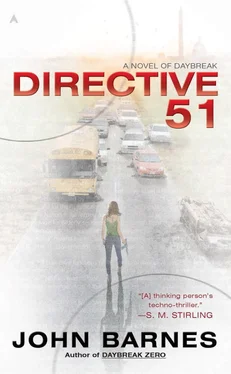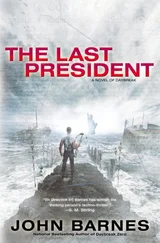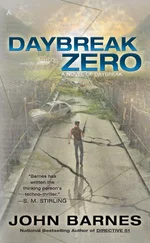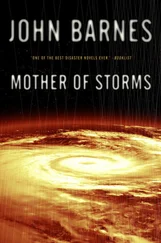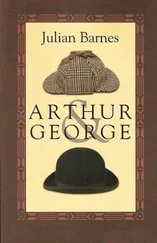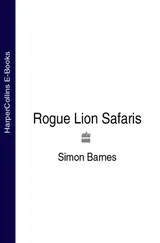“Door to surrender ,” Allie said, looking at McIntyre.
Weisbrod made a tent with his hands and stared into space. God, I hope that means you’re actually thinking and not trying to impress your aggressive little minion with what a thinker you are, Heather thought, and I wish I didn’t have to worry about that. It just seems so unfair. I never had to worry about that before.
“Well,” he said, “if you could float the idea past Cameron Nguyen-Peters, through a back channel, then I’d say we wouldn’t want to be the side that said no.”
“But we’re not quite saying we’re going to do it, for sure.”
“No, I guess we’re not.”
“Then what if they say the same thing?”
Weisbrod shrugged. “We’ll consider that situation if it comes up. Right now we can just probe each other about it. My guess is that they won’t want to run the risk of an experiment that is apt to bolster the system-artifact hypothesis.” He smiled at her, and it was a moment where she saw the old Graham. “So I’m saying go ahead because I think we’ll get some cheap propaganda points, and if they agree, we’ll get some slightly more expensive propaganda points. Either way, we come out ahead, and I don’t really think there’s any risk of our being embarrassed.” He glanced around the room and said, “Any dissent?”
He’s not including Allie’s pouting expression as dissent, Heather thought, that’s something.
SIX DAYS LATER. OLYMPIA. NEW DISTRICT OF COLUMBIA. (OLYMPIA. WASHINGTON.) 7:15 P.M. PST. TUESDAY. FEBRUARY 4.
Because they did not dare use radio anymore, the fastest secure communication these days was via the Bubble Drop: letters written in pencil and wetted with disinfectant were sealed in a glass jar with a nail tied to a piece of copper wire. The jar was degaussed in the Big Ripper, as the Evergreen State physicist who had devised it had dubbed it—a generator-magnet-coil system, driven by a weight descending on a line from a six-story building. Whatever was inside the coil received enough strong, shifting electric and magnetic fields to kill most nanoswarm, and if any of them survived, the field and current surges were enough to cause them to start breeding at the junction of copper and iron. So if an hour after degaussing, no white fuzz was growing where the nail joined the wire, the bottle was pronounced sterile.
Then Bambi Castro, taking the Stearman on the down-coast mail run to the nine Castles that were aligned with Olympia, would fly the jar a hundred miles or so out into the Pacific, loft a brightly colored paper kite on a five-hundred-foot cotton kite string, and work downward until the plane was just skimming the waves. At that point, she’d toss the jar, tied to the kite string, over the side, where it would drop into the water and act as a sea-anchor to the kite.
The Stearman would head for land, and a Pacific Fleet Navy helicopter, which had been watching from a safe distance upwind, would swing in at low speed and, using a grapnel on a long rope, grab the kite and begin hauling up, eventually bringing the jar to within a hundred feet of the helicopter, where it would hang until it could be set down on a ship’s deck—not one of the precious nuclear vessels, of course, but one of their still-functioning oil-fueled escorts.
On shipboard, they’d dip the jar in boiling water and pass it to the carrier in a zipline package. From the carrier it went into a parachute package in an F-35, to be dropped on the golf course at Athens; the F-35 would go on to land on a carrier with the Atlantic Fleet. The whole process was awkward, but it emitted no radio waves, included a reconnaissance of the country, and posed relatively little risk of contaminating the Navy’s precious few remaining ships, planes, and helicopters.
The return process involved a jar launched on a hot-air balloon from the Georgia coast, snagged by a helicopter, and walked through the same process, with one package of mail eventually being dropped by parachute onto Gray Field at Fort Lewis.
“And that’s what’s amazing about this,” Arnie explained. “Cam must have written back within an hour or two of getting the message, which means he must have put everything together in that time. He’s gotta be pretty serious about this.”
Hello, everyone,
After discussion with the scientific staff, we’ve agreed that the experimental attempt to attract and study an EMP weapon (which we believe to be directed enemy fire, and you believe to be a sort of massive leftover Daybreak booby trap) would be thoroughly worthwhile. Given the damage certain to be sustained by remaining electrical systems in any location where this happens, we propose the former NREL experimental wind turbine development area at Mota Eliptica, about 150 miles east of Lubbock, would be a relatively harmless site that has adequate power generation and high-tension-line capacity; the construction and observation could be supervised from a main office in Pueblo, Colorado, where, as you note, there is already appropriate Federal office space, and it can be another joint activity under the Federal Reconstruction Information Service (or whatever we end up calling it) that we have already agreed to share.
Hopefully in the process we’ll be able to locate and attract some surviving engineers and scientists from the many pre-Daybreak Rocky Mountain defense and scientific facilities.
We’ll go halves with you on project cost and equipment; we’re assembling a team of half a dozen scientists and engineers who will take the train overland to Pueblo as soon as we know you’re coming as well. We’ll be glad to have Dr. Arnold Yang as project leader; I trust his integrity completely.
Naturally we understand that you believe that the experiment will turn up evidence indicating that the device producing EMPs is wholly robotic. Obviously, we think something different will be the result. It seems to me that would be all the more reason to run the experiment.
A target date of June 30 for starting up the attraction device would give everyone time to install as much anti-EMP protection as we reasonably can and to alert the Castles and the independent cities.
We actually already have constructed a few crude recording-radar sets (ones that make a paper record) very similar to what Dr. Yang proposes, and we will dedicate as many of them as we can spare to this project. I sincerely hope we will be able to cooperate on this issue, and on many other issues in the future.
Warm regards, Cameron Nguyen-Peters Coordinator, Temporary National Government
“We know it has to be a trick,” Allie said, glancing at Graham, “so the question is what kind of trick. It looks to me like they’re turning it into military intelligence gathering, which means implicitly we’re agreeing to get involved in their war against the Unfindable Enemy. I don’t know how we’ll back out of this—”
Arnie said, “This is exactly what we wanted, and I don’t see why we don’t just accept it.”
The room felt freezing cold, despite the big fire built against the February damp.
Softly, Heather said, “Graham, you said you didn’t want to be the one who said no.”
“And I don’t,” he said. “And I won’t be. Make it happen. Arnie, you’re the project leader—you’ll be in the field; you’ll report to Heather, since she was already going to set up the reconstruction research offices in Pueblo. Allie, this is one where I’m not taking your advice. General McIntyre, find a smart intelligence officer to send along so that whatever they learn by working with us, we know that they learned it. Don’t stop them and for god’s sake don’t sabotage the project, but I want to know what they’re getting out of this.” He looked around the room with the face of a man who not only can’t please everyone, but can’t please anyone. “That’s a decision, people; make it happen or show me why it’s wrong.”
Читать дальше
